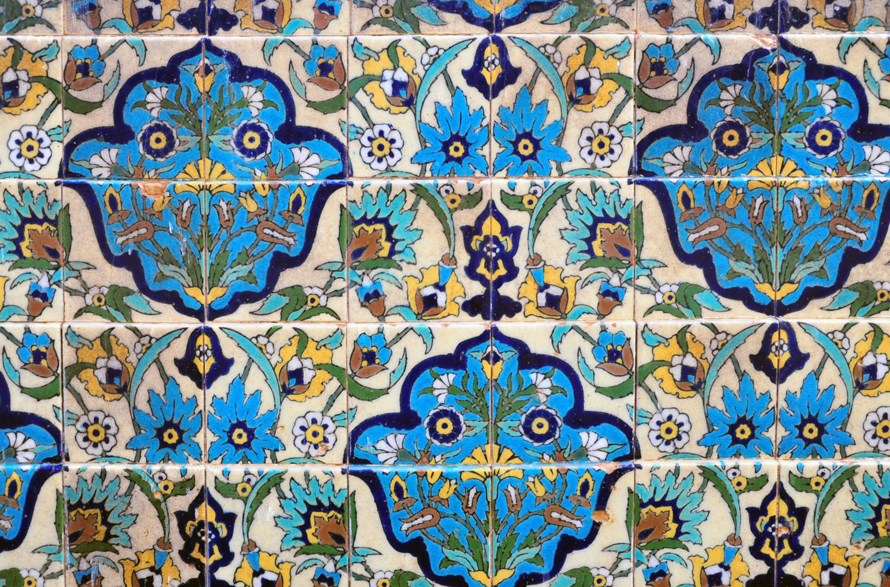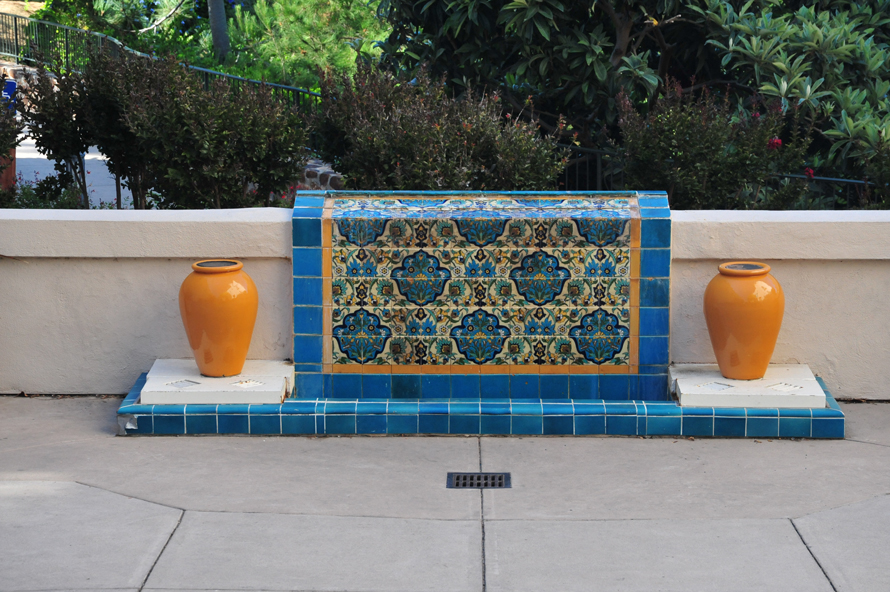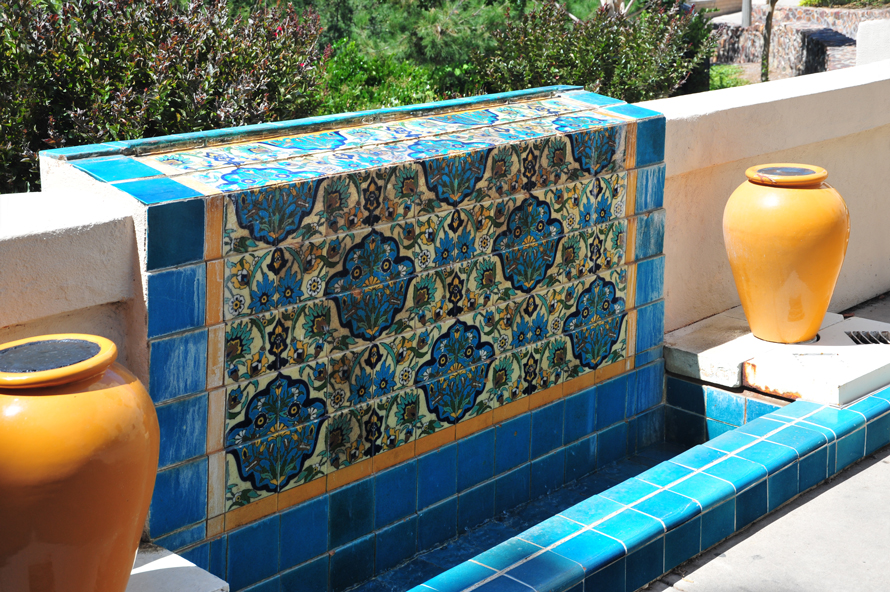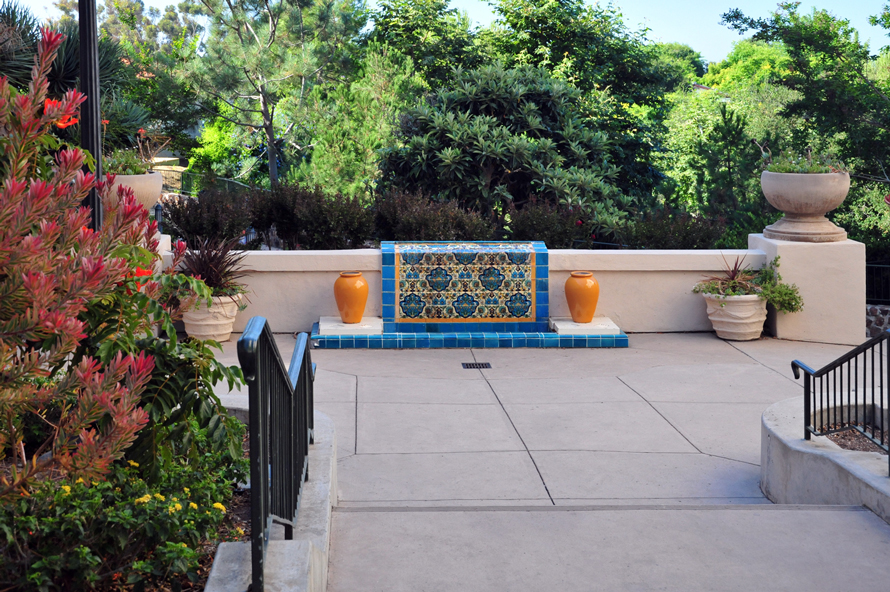 SET BACK FROM EL PRADO's south side, the stunning Persian Water Rug Fountain is tucked away at the end of a sloped walkway in a garden between the House of Hospitality and the Casa de Balboa. SET BACK FROM EL PRADO's south side, the stunning Persian Water Rug Fountain is tucked away at the end of a sloped walkway in a garden between the House of Hospitality and the Casa de Balboa.
These exquisite tiles were made by Gladding, McBean, & Company, California’s oldest and largest potter, in the cuerda seca style. Founded in Lincoln in 1875 by Charles Gladding, Peter McBean, and George Chambers, the company remains in operation to this day.
Based on traditional Persian floral carpets made in brilliant, contrasting colors of cobalt blue, or Persian blue, and golden yellow, the design's origins are in Persian palaces and gardens. Each row of tiles is set with the top edge projecting 1/2” beyond the row above to create a rippling sound as the water flows gently down the carpet.
Flanked by a pair of tall pottery urns, the tile carpet "drapes" over the wall to measure 74″ x 44.″ Of this full expanse, a 60-inch-wide tile panel faces the viewer. The water flows into a 74″ x 17″ basin at ground level. The blue tile edging extends 30″ beyond the basin on both sides, and surrounds the urn platforms. The top and face panels consist of 6″ x 6″ Gladding, McBean Pattern TA-18 tiles. A solid border is comprised of nearly iridescent cobalt Blue 6″ x 6″ tiles and a band of gold 6″ x 1.75″ tiles. The basin's edges and bowl are adorned with matching blue tiles including bullnose tiles along the finished edges. Two light wells on either side illuminate the glazed pottery urns, also sourced from Gladding, McBean.
Initially, the border tiles and panels were attributed to the D&M Tile Company in Los Angeles, as indicated in an order letter. However, findings reveal that American Encaustic Tiling Co., also located in Los Angeles, was the actual producer of the solid color border tiles. This conclusion is supported by a broken tile, which bears the company's markings on the back: T7S AET CO.
|




